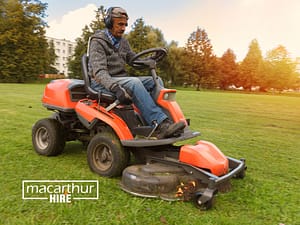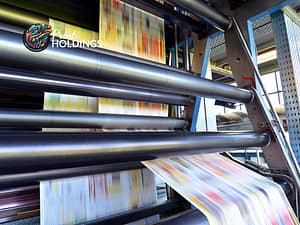The industrial landscape has long been shaped by a workforce dominated by male-specific workwear, leading to a significant gap in protective gear that properly fits women. As the number of women in industries like construction, manufacturing, and engineering grows, so does the need for safety workwear designed for the female form.
Women’s safety workwear isn’t just about resizing men’s gear; it’s about reconceptualizing design to accommodate differences in body shape, size, and the ergonomics of the female anatomy.
Why is there a growing need for women-specific safety workwear?
The need for women-specific safety workwear stems from a combination of increasing female participation in traditionally male-dominated fields and a heightened awareness of workplace health and safety standards. Properly fitted workwear is essential not only for comfort but also for the functionality of safety features. Ill-fitting garments can pose safety risks, such as tripping hazards or the potential for getting caught in machinery.
How does women’s workwear differ from men’s in terms of design and fit?
Women’s safety workwear is designed to account for differences in body shape, such as hip-to-waist ratios and torso lengths. The design process involves anatomically suitable cuts that allow for a full range of motion without compromising safety. The fit is tailored to ensure that protective elements like padding or reinforced seams are positioned correctly to provide the intended protection.
Assessment of Workplace Risks for Women
What unique safety considerations need to be taken into account for women in the workplace?
The unique safety considerations for women include the fit of protective garments, the location of protective padding, and the need for adjustable features that can be tailored to individual body types. These considerations are essential to ensure that workwear does not hinder movement or prevent women from performing tasks efficiently and safely.
How do workplace hazards affect the design of women’s safety workwear?
Hazards such as exposure to chemicals, electrical risks, and the dangers of working at heights require safety workwear to have specific features, like chemical-resistant materials or flame-retardant fabrics. For women, these features must be integrated into garments without impeding mobility or comfort, which can be more challenging due to the variety of female body shapes.
Key Features of Women’s Safety Workwear
What are the essential features of safety workwear designed for women?
Essential features include adjustable closures for a secure fit, stretchable fabrics for ease of movement, and appropriately placed pockets that are accessible and practical. Protective elements like knee pads or elbow pads must be correctly aligned with the wearer’s joints. High-visibility options are also crucial for women working in low-light conditions, with reflective materials positioned to ensure visibility.
How do these features enhance protection and comfort for women on the job?
By incorporating these features, women’s workwear enhances protection by ensuring that safety elements are effective and that the risk of accidents related to poor fit is minimized. Comfort is also a key consideration, as workwear that allows freedom of movement and is comfortable to wear for extended periods can reduce fatigue and improve overall job satisfaction.
Ergonomic Design in Women’s Workwear
How does ergonomics play a role in the design of women’s workwear?
Ergonomics in women’s workwear involves designing garments that conform to the contours of the female body, allowing for ease of movement while maintaining safety standards. The goal is to create workwear that supports the natural movement of the wearer during various tasks, reducing the risk of strain or injury. For example, ergonomic workwear may feature pre-curved sleeves or legs that align with the natural stance of the body.
What ergonomic features should be looked for in women’s safety apparel?
When selecting women’s safety apparel, ergonomic features to look for include articulated joints for unrestricted movement, adjustable straps or waistbands for a better fit, and reinforced high-wear areas for durability. Padding in the right places, such as the knees and elbows, should accommodate movement without shifting, and the overall garment should allow for layering without being bulky or restrictive.
Material and Fabric Considerations
What materials are best suited for women’s protective clothing?
Materials that combine durability with breathability, such as cotton blends, are suitable for women’s protective clothing. Fabrics with stretch properties, like elastane, can improve fit and mobility. For specific hazards, materials might include flame-resistant fibres, cut-resistant weaves, or non-permeable fabrics for chemical protection.
How do fabric choices impact the functionality and comfort of women’s safety workwear?
Fabric choices greatly influence the functionality of safety workwear. Breathable materials help regulate body temperature and moisture, while stretchable fabrics can enhance the range of motion. Additionally, the weight of the fabric is important; it must be durable enough to protect against hazards yet light enough to prevent fatigue.
Sizing and Fit Challenges
Why is proper sizing and fit crucial for women’s safety workwear?
Proper sizing and fit ensure that protective elements of the workwear are positioned correctly to safeguard against workplace hazards. Ill-fitting workwear can lead to increased risk of accidents, such as tripping or entanglement with machinery. Additionally, well-fitted workwear can help prevent musculoskeletal problems caused by repetitive movement in garments that restrict or misalign the body.
How can the industry address common fit challenges faced by women?
The industry can address fit challenges by offering a wider range of sizes and adopting designs that account for the diversity of women’s body types. This could include features like adjustable waistbands, stretch panels, or different garment lengths. Implementing a more inclusive sizing system that goes beyond the traditional small, medium, and large can also ensure that more women find workwear that fits them correctly. Manufacturers should consider feedback from female workers and involve them in the design process to create workwear that meets their needs accurately.
Personal Protective Equipment (PPE) for Women
How is PPE tailored to fit women’s needs?
PPE tailored for women takes into account the variation in body shapes and sizes, ensuring that items such as harnesses, gloves, and safety glasses fit snugly and securely. This might mean redesigning products to accommodate narrower shoulders, smaller hands, and the differences in facial structure to ensure that protective gear does not slip or leave gaps that could compromise safety.
What are the considerations for selecting women’s PPE in various industries?
When selecting PPE for women in various industries, considerations include the nature of the job, the hazards present, and the environment in which the work is performed. The PPE must meet the same safety standards as men’s while also accommodating the differences in physique. For example, in industries where chemical exposure is a risk, the protective clothing must not only be made of the appropriate resistant material but also fit in a way that prevents chemicals from coming into contact with the skin.
Inclusivity and Diversity in Safety Workwear for Women
How is the safety workwear industry adapting to be more inclusive for women?
The industry is adapting by expanding their product lines to include a wider range of sizes and by designing PPE from the ground up with women in mind. This includes creating panels and advisory groups consisting of women from various industries to provide insights into the specific needs and challenges they face regarding safety workwear.
What advancements have been made to cater to diverse body types and needs?
Advancements include the use of new materials that offer more stretch and flexibility, as well as modular designs that allow for individual pieces of PPE to be custom-fitted. There’s also a trend towards designing PPE that can be adapted for pregnant women, ensuring that they can continue to work safely without compromising their health or that of their unborn child.
Conclusion: The Advancement of Women’s Protective Workwear
The future of women’s safety workwear is one of innovation and standardization. As industries and regulatory bodies recognize the importance of fit and design in PPE, standards are likely to evolve to include specifications for women’s workwear. The increased demand will lead to a broader availability of options, making it easier for women to find PPE that fits correctly and protects as intended.






